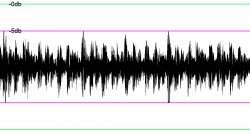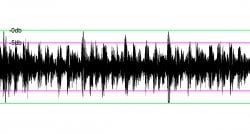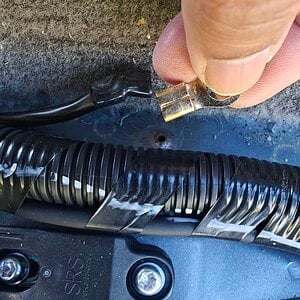ThxOne Premium Member
The Boss
So I researched this for a bit and searched as well. What I came up with is as follows. Please let me know if my brain got this right. Please correct where a correction may be needed.
1. Head unit volume should be set with a 0db track with the volume as high as it will go until it just clips, then back it off one click so that it stops clipping.
2. Mids and Highs amplifier should be set to 0 to 5db (5db being more prudent for headroom) until the signal clips, then backed off until it stops clipping.
3. Subwoofer amplifier should be set to 10db until clipping then backed off until it stops clipping.
The head unit is set to -0db because that is as high as a competent recording engineer could potentially record the music. Most music WILL NOT hit -0db so to get more volume from the system we set the mids and highs to approximately 5db without clipping so that the music can get closer to the -0db mark the head unit is set at. With the subs, same idea but with 5-10db as sub amps can usually handle more gain and clipping. So setting the gains above -0db doesn't mean its distorting it is moving those frequency bands that are below -0db, closer to -0db right? Say I am listening to music and I am looking at an RTA, my head unit is set to -0db but all the music displayed on the RTA is peaking at -6db. By adding 5db to the mids and highs, the RTA will now show my music playing at -1db which should be a lot louder but still clean right? Have I got it in my brain right? Is this the goal???
1. Head unit volume should be set with a 0db track with the volume as high as it will go until it just clips, then back it off one click so that it stops clipping.
2. Mids and Highs amplifier should be set to 0 to 5db (5db being more prudent for headroom) until the signal clips, then backed off until it stops clipping.
3. Subwoofer amplifier should be set to 10db until clipping then backed off until it stops clipping.
The head unit is set to -0db because that is as high as a competent recording engineer could potentially record the music. Most music WILL NOT hit -0db so to get more volume from the system we set the mids and highs to approximately 5db without clipping so that the music can get closer to the -0db mark the head unit is set at. With the subs, same idea but with 5-10db as sub amps can usually handle more gain and clipping. So setting the gains above -0db doesn't mean its distorting it is moving those frequency bands that are below -0db, closer to -0db right? Say I am listening to music and I am looking at an RTA, my head unit is set to -0db but all the music displayed on the RTA is peaking at -6db. By adding 5db to the mids and highs, the RTA will now show my music playing at -1db which should be a lot louder but still clean right? Have I got it in my brain right? Is this the goal???
Last edited by a moderator:




